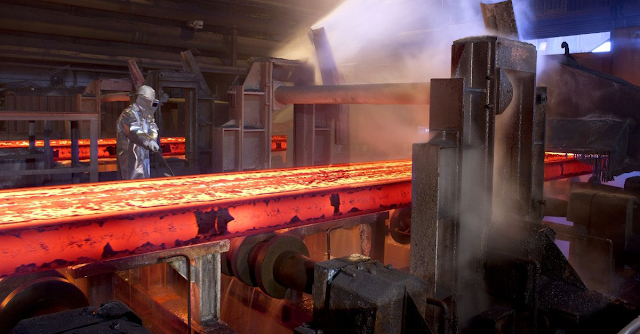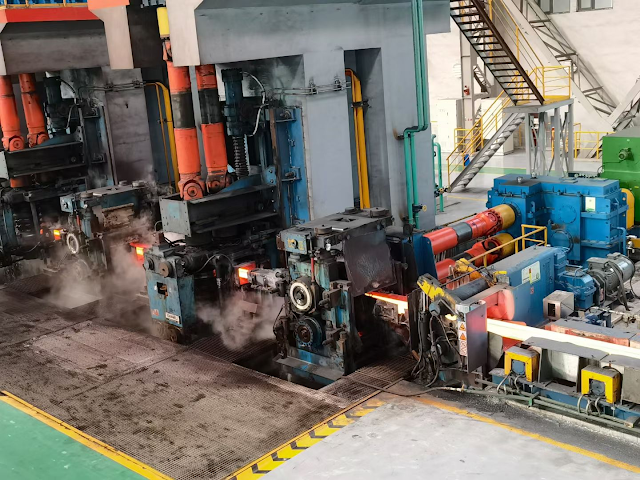What is a Rolling Mill?
The steel rolling mill is the equipment to realize the metal rolling process. Generally refers to the equipment used to complete the whole process of rolling production, including main equipment, auxiliary equipment, lifting and transportation equipment and ancillary equipment. But generally speaking, the rolling mill only refers to the main equipment.
II. Nomenclature of Rolling Mill
It is named after the type of rolled product, the type of mill and the nominal size. The principle of "nominal dimension" refers to the section mill as the pitch diameter of the herringbone gear of the gear base; the blooming mill as the nominal diameter of the roll; the strip mill as the length of the working roll body; and the steel tube mill as the maximum diameter for production. It is sometimes named after the inventor of a rolling mill (e.g. Sendzimir mill).
III. Selection of Rolling Mills
The type and dimension of finished or semi-finished rolling mill shall be selected according to the requirements of product variety, specification, quality and output, equipped with necessary auxiliary, lifting, transportation and accessory equipment, and finally balanced according to the requirements of various factors.
IV. COMPONENTS OF STEEL ROLLING MILLS
1. Work stand: composed of roll, roll bearing, frame, rail seat, roll adjustment device, upper roll balance device and roll changing device, etc.
2. Roll: It is a part that makes metal plastic deform.
3. Roll bearing: support the roll and maintain the fixed position of the roll in the frame. Roll bearings vary greatly with heavy working loads, so small coefficient of friction, sufficient strength and stiffness are required, and rolls can be easily replaced. Different types of roll bearings are used for different mills. Rolling bearings are mainly used for work rolls of strip mills because of their high rigidity and small coefficient of friction, but their small pressure-bearing capacity and large size. Sliding bearings have two types: semi-dry friction and liquid friction. Semi-dry friction roller bearings are mainly bakelite, copper and nylon bearings, which are relatively inexpensive and are mostly used in profile mills and billet openers. There are three kinds of hydrodynamic, hydrostatic and hydrostatic bearings. The advantages are small friction coefficient, large pressure-bearing capacity, high working speed and good rigidity, while the disadvantage is that the oil film thickness changes with speed. Liquid friction bearings are mostly used for support rolls in strip mills and other high-speed mills.
4. Mill stand: It is composed of two "archways" to install the roll bearing block and roll adjusting device. It needs sufficient strength and steel strength to withstand the rolling force. There are two main types of rack, closed type and open type. Closed stand is an integral frame with high strength and rigidity, mainly used for blooming mills and strip mills with high rolling force. Open frame is composed of frame body and upper cover, which is easy to change rolls. It is mainly used in cross section mills. In addition, there are no archway mills.
5. The rolling mill track base is used to install the frame and fix it on the foundation, also called the floor plate. To withstand the gravity and tipping moment of the worker base while ensuring the accuracy of the mounting dimensions of the worker base.
6. Roll adjustment device: used to adjust the roll gap so that the rolled piece can reach the required section size. Upper roll adjustment device, also known as "press-down device", has three kinds: manual, electric and hydraulic. Manual press-down devices are commonly used in profile mills and small mills. Electric press-down device includes electric motor, reducer, brake, press-down screw, press-down nut, press-down position indicator, spherical pad and pressure gauge and other components; it has low transmission efficiency, large rotating inertia of moving parts, slow reaction speed and low adjustment accuracy. Since 1970s, AGC (Automatic Thickness Control) system has been used in strip rolling mills. Hydraulic press device has been used in new strip cold, hot and thick rolling mills, which has the advantages of small thickness deviation and high product qualification.
7. Upper roll balancing device: device used for lifting upper roll and preventing impact of rolled parts when entering and leaving the roll. Forms are: spring type, multi-purpose on profile rolling mill; hammer type, commonly used on blooming mill with large roll movement; hydraulic type, multi-purpose on four-roll strip rolling mill.
In order to improve the operation rate, it is required that the roll change of the rolling mill be quick and convenient. Roll change modes are C-hook type, sleeve type, trolley type and frame type. Roll change in the first two ways is assisted by crane, while the whole frame requires two sets of frame for roll change. This method is mostly used for small mills. Car roll change is suitable for large rolling mills and facilitates automation. At present, the rapid automatic roll changing device is used on the rolling mill. It only takes 5-8 minutes to change the roll once.
8. Driving device: It consists of electric motor, reducer, gear seat and connecting shaft. The gear base distributes the drive torque to two or more rolls.
9. Auxiliary equipment includes a series of equipment for auxiliary process in rolling process. Such as raw material preparation, heating, steel turning, shearing, straightening, cooling, flaw detection, heat treatment, pickling and other equipment.
Please contact stella@hanrm.com for a quotation.
And free send inquiry to us.
Email: stella@hanrm.com stellarollingmill@gmail.com
Whatsapp/Wechat:+8615877652925
.jpg)

















